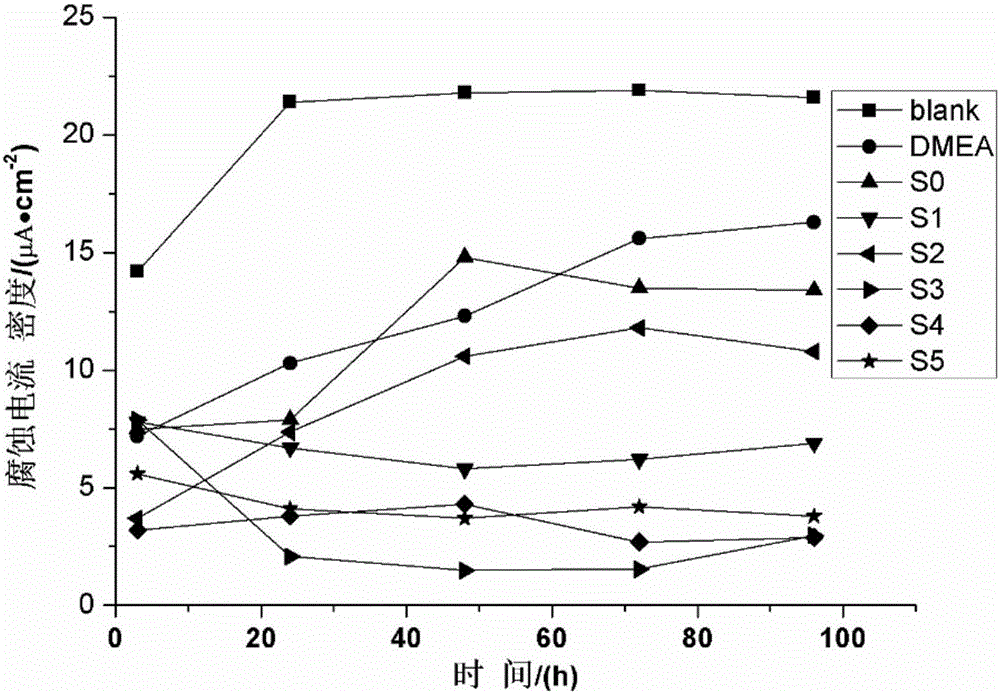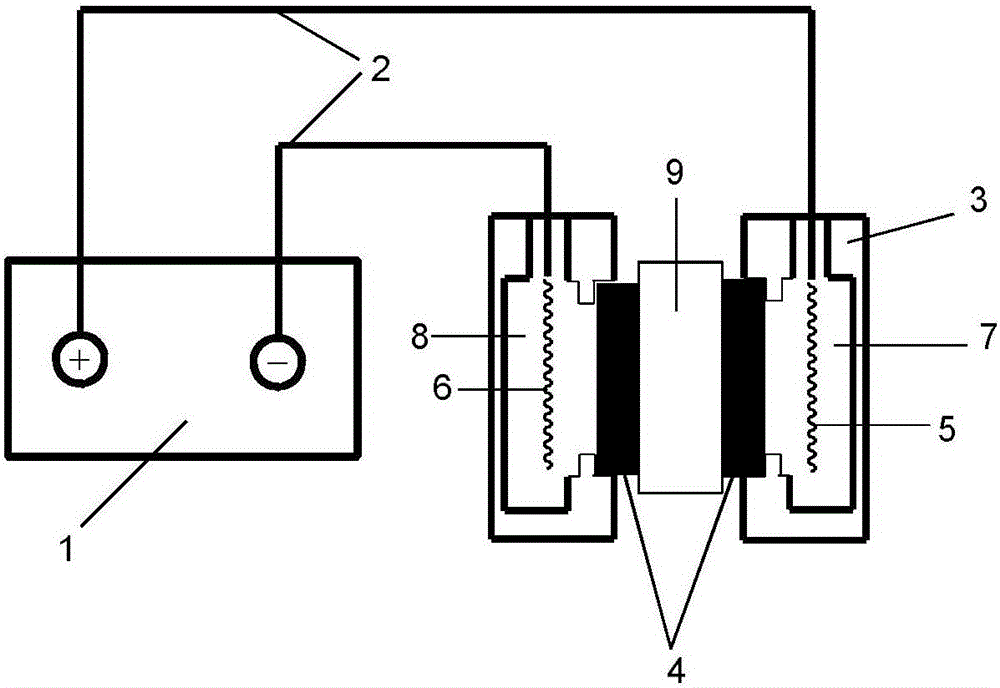Imidazole ionic liquid electromigration antirust agent and preparation method thereof
An electromigration and ionic liquid technology, applied in the field of building materials, can solve problems such as unsatisfactory rust inhibition effect and slow migration, and achieve the effects of excellent rust inhibition efficiency, simple synthesis method, and cheap and easy-to-obtain raw materials.
- Summary
- Abstract
- Description
- Claims
- Application Information
AI Technical Summary
Problems solved by technology
Method used
Image
Examples
Embodiment 1
[0026] 54g of imidazole (0.8mol) was added into the round bottom flask, followed by the addition of 5g of tetrabutylammonium bromide (0.016mol) and 150mL of 30% NaOH solution, and 136g of methyl iodide (0.96mol) was added dropwise under stirring, at 40°C Under reaction 24h. After the reaction, the reaction solution was extracted three times with ethyl acetate, the organic phase was washed three times with saturated brine, the organic phase was collected, and the solvent was evaporated under reduced pressure to obtain N-methylimidazole.
[0027] The prepared N-methylimidazole was dissolved in 150mL of ethanol, and 64g of chloroethanol (0.8mol) was added, 78 ℃ Reaction 24h. After the reaction was finished, the solvent was evaporated, the product was washed 3 times with ethyl acetate, and dried in an oven to obtain the imidazole ionic liquid electromigration rust inhibitor, which had the following molecular structure:
[0028]
[0029] The chemical structural formula was cha...
Embodiment 2
[0031] 54g imidazole (0.8mol) was added in the round-bottomed flask, then 7g tetrabutylammonium bromide (0.022mol) and 150mL 30% NaOH solution were added successively, and 120g n-bromobutane (0.88mol) was added dropwise under stirring condition, Reaction at 50°C for 12h. After the reaction, the reaction solution was extracted three times with ethyl acetate, the organic phase was washed three times with saturated brine, the organic phase was collected, and the solvent was evaporated under reduced pressure to obtain N-butylimidazole.
[0032] The obtained N-butylimidazole was dissolved in 150mL of acetonitrile, 108g of benzyl chloride (0.85mol) was added, and 82 ℃ Reaction 36h. After the reaction was finished, the solvent was evaporated, the product was washed 3 times with ethyl acetate, and dried in an oven to obtain the imidazole ionic liquid electromigration rust inhibitor, which had the following molecular structure:
[0033]
[0034] The chemical structural formula was...
Embodiment 3
[0036] 54g imidazole (0.8mol) was added in the round-bottomed flask, then 8g tetrabutylammonium bromide (0.024mol) and 150mL 30% NaOH solution were added successively, and 109g n-bromobutane (0.8mol) was added dropwise under stirring condition, Reaction at 50°C for 18h. After the reaction, the reaction solution was extracted three times with ethyl acetate, the organic phase was washed three times with saturated brine, the organic phase was collected, and the solvent was evaporated under reduced pressure to obtain N-butylimidazole.
[0037] The prepared N-butylimidazole was dissolved in 150 mL of acetonitrile, 93 g of sodium chloroacetate (0.8 mol) was added, and the pH was adjusted with 10% NaOH aqueous solution to keep it at 7-8,82 ℃ Reaction 48h. After the reaction was finished, the solvent was evaporated, the inorganic salt was filtered out, the product was washed 3 times with ethyl acetate, and dried in an oven to obtain the imidazole ionic liquid electromigration rust in...
PUM
 Login to View More
Login to View More Abstract
Description
Claims
Application Information
 Login to View More
Login to View More - R&D
- Intellectual Property
- Life Sciences
- Materials
- Tech Scout
- Unparalleled Data Quality
- Higher Quality Content
- 60% Fewer Hallucinations
Browse by: Latest US Patents, China's latest patents, Technical Efficacy Thesaurus, Application Domain, Technology Topic, Popular Technical Reports.
© 2025 PatSnap. All rights reserved.Legal|Privacy policy|Modern Slavery Act Transparency Statement|Sitemap|About US| Contact US: help@patsnap.com



